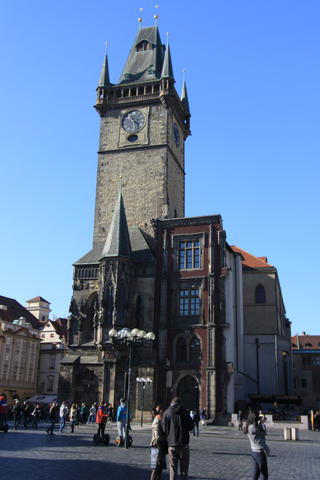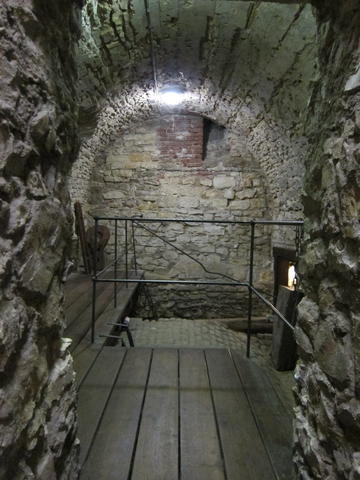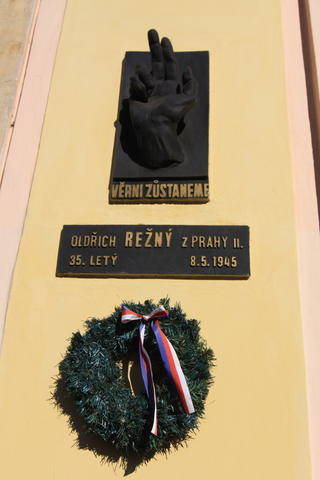The Prague Uprising






The Prague Uprising (not to be confused with the Prague Spring of 1968), occurred from May 5 to May 8, 1945. With the Third Reich collapsing on all fronts the last significant German military grouping was that of Army Group Center, which early in May 1945 controlled, among other areas, the better part of Bohemia and Moravia - including the Czech capital of Prague. For its part Army Group Center was mostly concerned with trying to move west to surrender to the US Third Army; rather than surrender to a Red Army very much vengeance minded after Germany's genocidal destruction of much of the Western Soviet Union.
It was in this context of Allied forces advancing on all fronts, and German troops trying to end the war in the most favorable position for themselves, that the Czech resistance sought to liberate Prague from German control. For their part the resistance's most notable success of the war had been the 1942 assassination of SS-Obergruppenführer, Chief of the Reich Main Security Office, and Deputy Reich-Protector of Bohemia and Moravia Reinhard Heydrich. Though a notable propaganda coup that took out one of the top officers in the Nazi hierarchy, Heydrich's assassination had little practical impact on the military and political future of the war. However, if the resistance could drive the Germans out then it would give the Czech's a strong position for re-establishing their own political self-determination.
As such, very early in the morning on May 5th the Prague uprising began with an assault on the Waffen-SS controlled city radio buildings as well as other key administrative and communications nodes. The Prague Astronomical clock on Old Town Square (see top two pictures and originally built in 1410) was an important site for the resistance. The Czech's used its extensive underground tunnels as a key stronghold (see the 4th-6th pictures from the top for a look at not only the tunnels but also one of the pits within the tunnels used to house captured Germans) and broadcast messages to the public from the stout building. By the morning of May 6th as much as half of the city was in Czech control.
Nevertheless, the Germans, in spite of everything going on around them (with Soviet forces bearing down on the city from the east and the U.S. Third Army sitting less than an hour's drive to the west) had managed to stabilize the situation. Shrugging off the defection to the Czech resistance of a division of Russian prisoners of war conscripted into the German Army as part of a "Russian Liberation Army" the Waffen-SS led a comprehensive, combined-arms, counter offensive (see third picture down from top, of a German Hetzer in Prague for which the resistance fighters had no real answer in terms of weaponry - with the picture to the right of the Hetzer showing that same street corner today) that pounded the resistance relentlessly. Again, with massive Allied army's bearing down from outside the city the scale of the German response at first blush seems surprising. However, Prague was the key communications network in the region. As such, the German soldiers were desperate to control its roads and railways in order to escape west and surrender to the Americans over the Red Army.
With German aircraft also joining the counter-attack the resistance agreed to negotiate rather than risk further destruction of the city. An example of the extensiveness of the destruction in Prague's Old Town can be seen in the first two pictures. The first is a series showing the Astronomical clock and its attendant building pre-war, on May 5, 1945, and after the Germans were done leveling much of the building. The second picture is another look at the tower as it stands today. On May 8 the resistance largely acceded to German demands to cease fighting and allow the Germans control over the city. On May 9th the Red Army made the whole agreement moot when it's forces rolled in and formally liberated the city.
Overall, the resistance forces fought surprisingly well considering their lack of heavy weapons. For instance, although nearly 1,700 Czechs died during the uprising so did roughly 1,000 German soldiers. To this day memorials to fallen resistance fighters mark the city (see bottom picture).
*The first and third pictures (from the top - the picture series of then and now) are from World War II in Prague. WWII in Prague is a tour company I cannot say enough good things about - even with all I know about the war they were able to teach me quite a few new things; and did so in an engaging and friendly manner.
*The remainder of the pictures are courtesy of me, Steven Mercatante, and were taken on September 30, 2013.



Post new comment